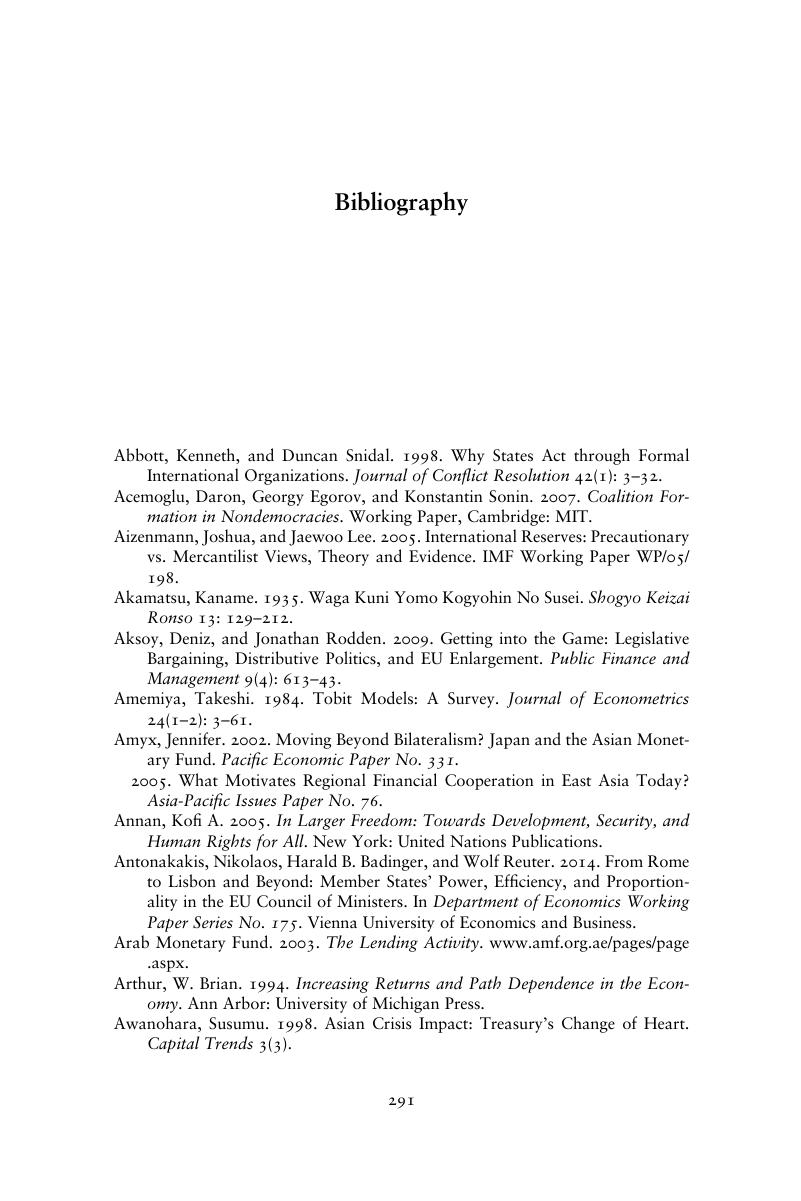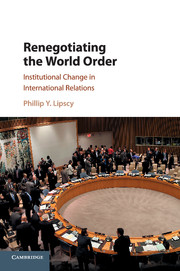Book contents
- Renegotiating the World Order
- Renegotiating the World Order
- Copyright page
- Dedication
- Contents
- Figures
- Tables
- Acknowledgments
- 1 Introduction
- 2 A Theory of Institutional Change
- 3 The International Monetary Fund and the World Bank
- 4 Japan in the International Monetary Fund and the World Bank
- 5 Policy Area Discipline
- 6 International Telecommunications Satellite Organization
- 7 Internet Corporation for Assigned Names and Numbers
- 8 The League of Nations and the United Nations Security Council
- 9 China–Taiwan Competition over International Organizations
- 10 Conclusion
- Bibliography
- Index
- References
Bibliography
Published online by Cambridge University Press: 22 June 2017
- Renegotiating the World Order
- Renegotiating the World Order
- Copyright page
- Dedication
- Contents
- Figures
- Tables
- Acknowledgments
- 1 Introduction
- 2 A Theory of Institutional Change
- 3 The International Monetary Fund and the World Bank
- 4 Japan in the International Monetary Fund and the World Bank
- 5 Policy Area Discipline
- 6 International Telecommunications Satellite Organization
- 7 Internet Corporation for Assigned Names and Numbers
- 8 The League of Nations and the United Nations Security Council
- 9 China–Taiwan Competition over International Organizations
- 10 Conclusion
- Bibliography
- Index
- References
Summary

- Type
- Chapter
- Information
- Renegotiating the World OrderInstitutional Change in International Relations, pp. 291 - 310Publisher: Cambridge University PressPrint publication year: 2017



